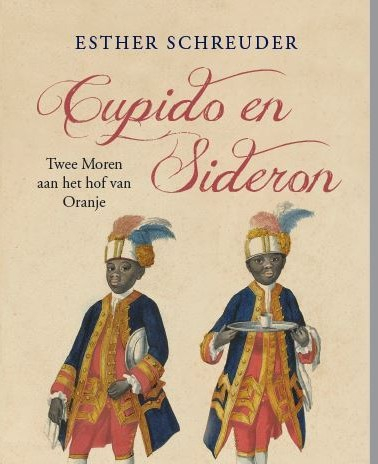
Although Biblical stories and mythological scenes are classified as history paintings, their content has a different import. Eroticism generally plays a major role in the representation of mythological stories which also offer greater opportunity for allusion and double entendre.
The mythological tales depicted in art during the sixteenth and seventeenth century derived from the classics, the works written by ancient Greeks and Romans, who called all black Africans Aethiopes, or Ethiopians. These classical authors, who were much read by artists in the Netherlands, accorded several Ethiopians a role in their stories.
The beautiful Andromeda, for example, nearly always portrayed as white, was actually Ethiopian in origin.

The Greek poet Homer (c. 800 – c. 750 BC) endowed the Ethiopians with a fabulous, almost supernatural status: he wrote that they came from the East, the land of the sun, were guiltless and fought under their king Memnon on the side of the Trojans in the Trojan War.
Almost certainly Homer did not know the exact location of Ethiopia.The Roman writer Pliny the Elder (AD 23 – 79) was also interested in the Ethiopians whom he described as a handsome race, the tallest people known, with skin burned by the sun and frizzy hair. He believed that Ethiopia lay in Nubia.
Later generations were better able to locate the country.
During the lifetime of the Greek writer Heliodorus of Emesa (third century AD) there was lively contact between the Greeks and Romans and ancient Ethiopia, which was also known as Aksum. Heliodorus was partly inspired by these relations to write a romantic tale he called Aethiopica, featuring a black Ethiopian royal couple, a white Andromeda and a white Ethiopian princess. The book was rediscovered centuries later and translated into French in 1547. In 1610 this was followed by a Dutch translation entitled De Moorenlandtsche gheschiedenissen, which enjoyed great, but brief, popularity.

Gerbrand Adriansz. Bredero 1585 –1618 wrote a poem in praise of the book and school master David Beck 1594 –1634 noted in his journal, Spiegel van mijn leven, from 1624, that he was reading De Moorenlandtsche gheschiedenissen.


Thus the classics formed a source of inspiration for sixteenth and seventeenth-century artists, some of whom included black Ethiopians in their images.
Esther Schreuder in the Black is beautiful, Rubens to Dumas catalogue.
See for more on these works (and a black Venus) prof. Elizabeth McGrath in Black is beautiful, Rubens to Dumas (2008).
About me
In 2008 I was guest curator of the exhibition Black is beautiful. Rubens to Dumas. Important advisors: Elizabeth McGrath (Rubens and colleagues, Warburg institute Image of the Black in Western Art collection), Carl Haarnack (slavery in books), Elmer Kolfin (slavery in prints and paintings) en Adi Martis (contemporary art). Gary Schwartz made his research for The Image of the Black in Western Art available to me.

In 2014 my essay ‘Painted Blacks and Radical Imagery in the Netherlands (1900-1940)’ was published in The Image of the Black in Western Art Volume V (I). (ed. David Bindman, Henry Louis Gates jr.)

In 2017 I published a book about the black servants at the Court of the Royal Van Oranje family. More than a thousand documents have been found about their lives. (only in Dutch)

All photos on this site are not intended for any commercial purpose. I have tried to trace all the rules and rights of all images. As far as I know, these images can be used in this way. If you ar a copyright holder and would like a piece of your work removed or the creditline changed then please do not hesitate to contact me.
For more information, please feel free to contact me estherschreuderwebsite@gmail.com
Research has been made possible thanks to a contribution of de Mondriaan foundation, AFK and VSB fonds.

